What a postpartum body really looks like
Or, more specifically, what mine has looked like over the years of growing two babies
I don’t think I’d ever seen a postpartum body before I saw my own. At least, not intimately. I hadn’t seen the way a deflated balloon-like stomach might ripple underneath the palm of a flat hand pressing against it. I hadn’t seen the way a once-buoyant bottom might lose its air (the term ‘mum bum’ might be a little sad, but it’s accurate) through the process of pregnancy and postpartum. And I certainly hadn’t seen a swollen midriff in a hospital mirror just hours after a mother had given birth.
But, despite moving through the experience of pregnancy, postpartum, and motherhood twice now, this realisation — that I didn’t know the postpartum body intimately until I met my own — isn’t something I’d ever acknowledged or named specifically.
In fact, I didn’t think about it at all until I started researching for my interview with Moroccan Australian author and therapist Nadia Mahjouri (coming to Ready or Not soon!). In an interview with Sarah Kanowski on Conversations, Nadia was talking about how her postpartum journey collided with one that would take her and her young baby to Morocco in search of her father.
Within the warmth of the women’s baths in Morocco, where nakedness was the norm and bodies were celebrated, she learned a lot about her relationship with her own postpartum body, and the western world’s relationship with bodies more broadly.
In the interview, she said:
“ I had a four month old baby and I was pretty self-conscious about my body.
And the thing with hammam is you strip naked. And so we took our clothes and my aunt took me into the middle room and she laid me down on the plastic piece of plastic on the floor, and she started to kinda scrub me. And I just remember feeling excruciatingly self-conscious.
And as she came towards my belly and I was looking like, “oh, I'm sorry about the stretch marks they’re from the baby’ and I'm trying to explain to her… and she pointed to her own belly, and she had two kids and her belly was very much like mine. And then she points around the room and I just look up and notice that this room is full of naked women. And every single woman who's had a baby has very clearly had her body marked by that. And the beautiful thing about it is there's no, there's no sense of shame, no sense of self-conscious.
There's no sense of holding back or reserve… It was such a healing experience to recognise that because I had never seen a postpartum body before. And now it's different because of the internet, but at that point, if you didn't have the perfect kind of physique, you wore a one piece. You didn't wear a bikini.
So I had just literally never seen a woman who'd had a baby's body before. And I just thought if I had grown up here, you know how differently I would've felt about this whole experience of moving into motherhood, particularly around my body.”
It got me thinking about my relationship with mine. Second time around, despite knowing that my body still fits within the realms of what society deems ‘acceptable’ as Steph Claire Smith so aptly described it, this relationship is not filled with the level of love and respect that came with first time motherhood. The honeymoon phase is over. My body hasn’t ‘bounced back’ after my second baby, and I’m disappointed to admit that it annoys me more than I thought it would.
Perhaps a more accurate way to describe how I feel about it is that I’m… actually, a little embarrassed by it. And more specifically, my stomach. The same stomach that swelled and stretched to grow the greatest loves of my life. The same stomach that felt first flutters and kicks as my babies danced and hiccuped within its warmth. The same stomach that I held so tenderly as it became more foreign to me everyday, because for a time there, I didn’t feel the need to suck it in. I was growing life, after all. If anything, I was pushing it further out.
You think that spreadsheet is good? Look what I can make!
And as someone that is mostly quite good at accepting things as they are, and who isn’t too obsessed with their appearance, I’ve spent a lot of time wondering why it’s so hard to accept a tummy that no longer looks like the one I carted around for three decades before babies. Why am I going to such lengths to hide the belly I was once so proud of? Why do I now feel anxious at the idea of getting into a bikini in front of people that mightn’t be aware how much motherhood has changed my body? Why does my old jeans no longer doing up cause such angst? Why can’t I let go of the things that no longer fit?
We spend a lot of time talking about the — mostly emotionally and societally driven versions of — identity shifts that come with motherhood. We celebrate the redefining of ambition. We applaud ourselves as we become firmer with our boundaries. We embrace new sparks of creativity. We make space for the mum asking the question: “who am I now?”
So why is it then, that we don’t make as much space for accepting our new bodies as we do our new lives and priorities and identities?
Perhaps it’s because it feels narcissistic to care about your body too much. Perhaps it doesn’t feel very feminist to focus on our looks. Perhaps it dumbs us down when we focus on something so unimportant. We’ve just created life for damn sake! Forget about what you look like for five seconds!
But the truth is, looking a tiny bit pregnant at nearly 18-months-postpartum with my second baby wasn’t exactly on my bingo card. So, instead, I’ll share with you what my postpartum body has looked like over the years of growing and giving birth to two babies. Not to glorify it (even though it did something pretty glorious). Not to hate on it (even though I might just a little). Instead, I simply want to accept it like those women in that Moroccan bath house.
Motherhood has marked every sense of my being. My values, my sense of self, my emotions, my brain, my interests, my hobbies, my priorities. Not one inch of me is unmarked by the experience of motherhood and matrescence. And that might sound daunting, but mostly, it’s a beautiful thing.
So why wouldn’t it leave some marks on my body, too?
My tummy might be softer, but so am I.
And for that, I’ll take a size up in my favourite jeans, thanks.

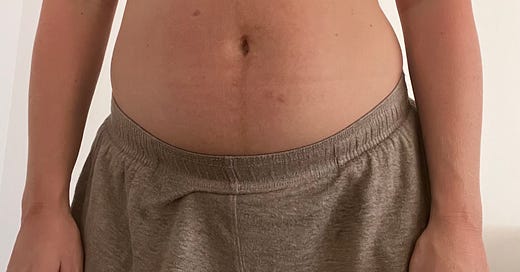



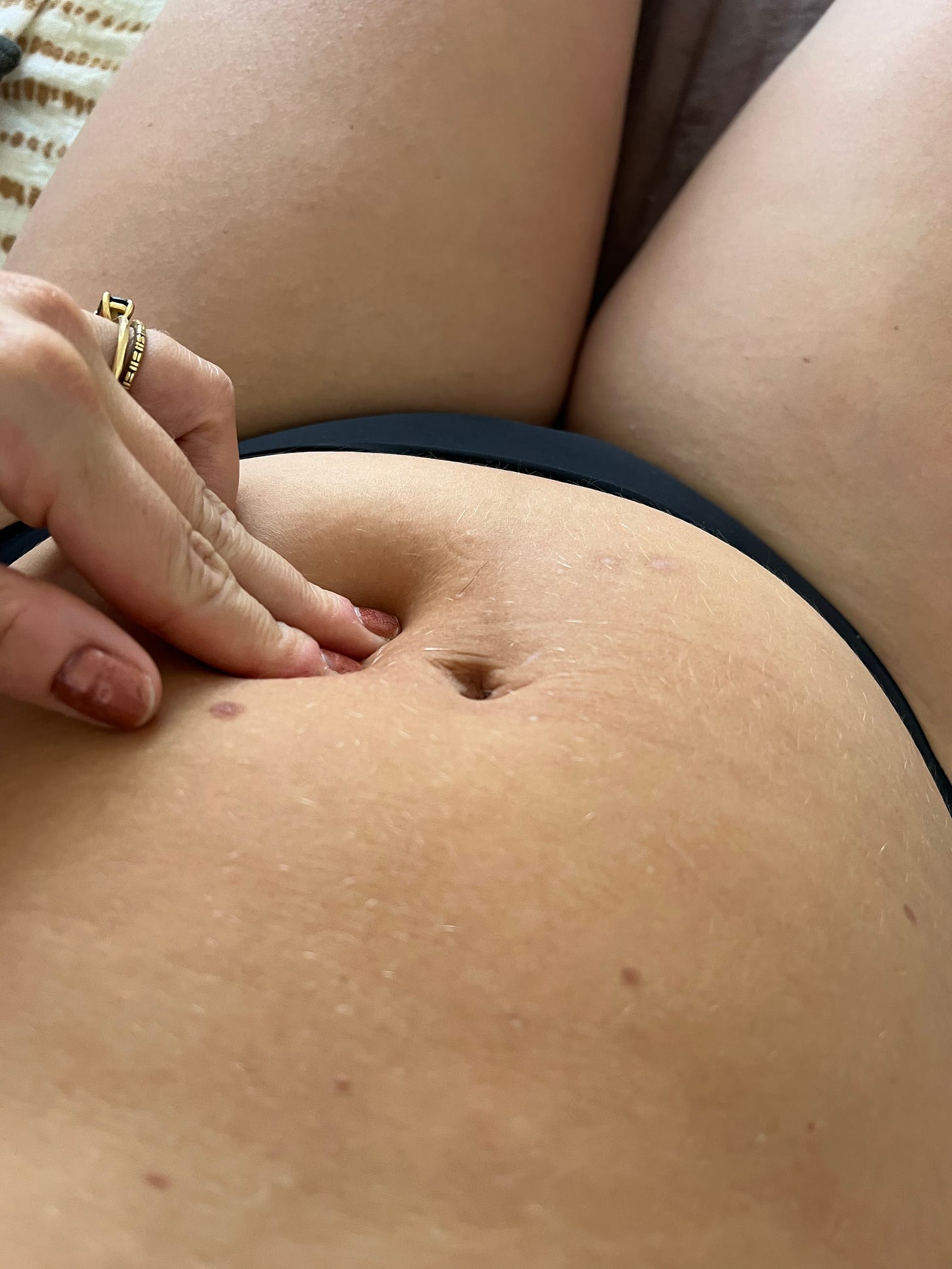
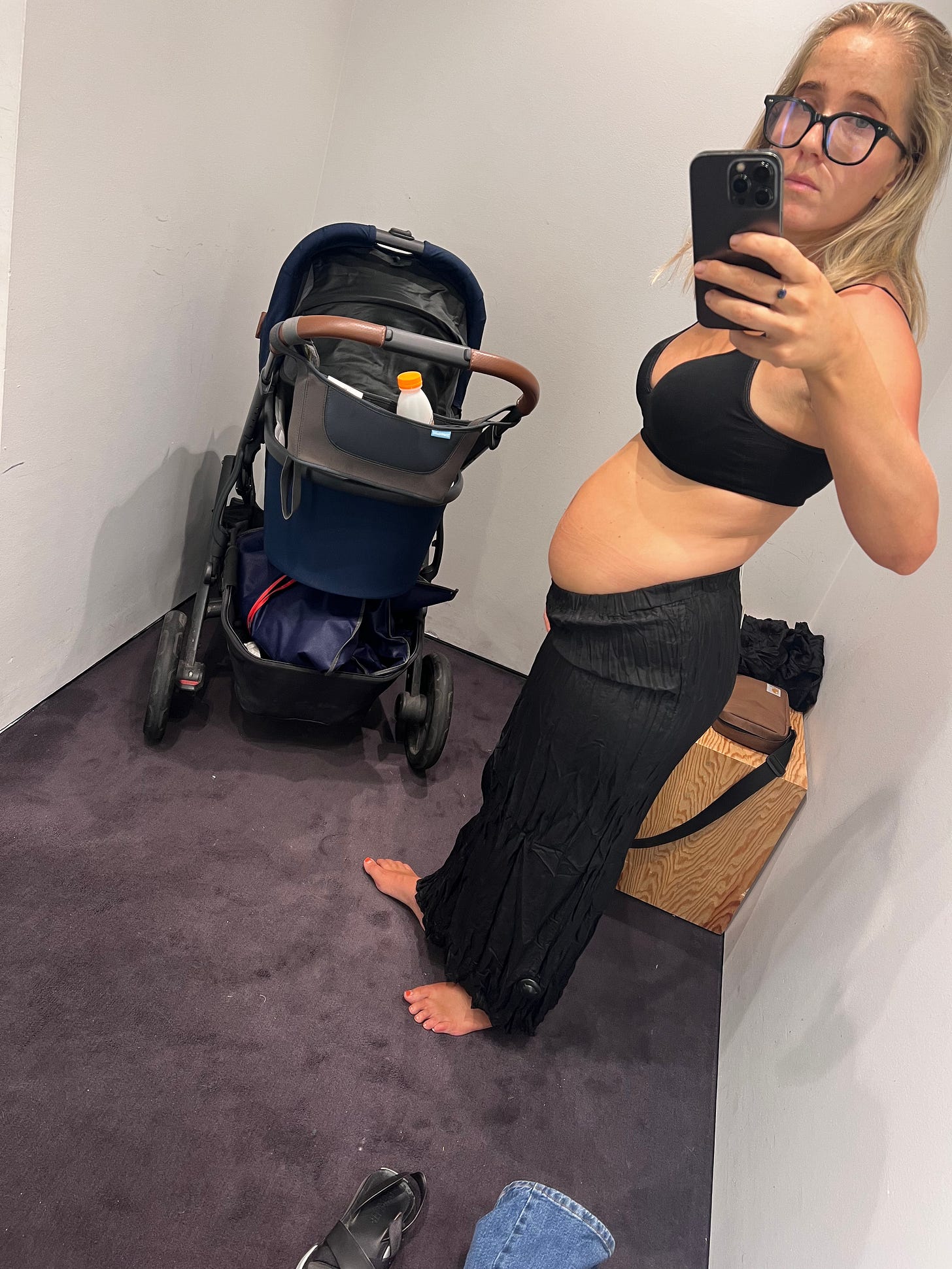
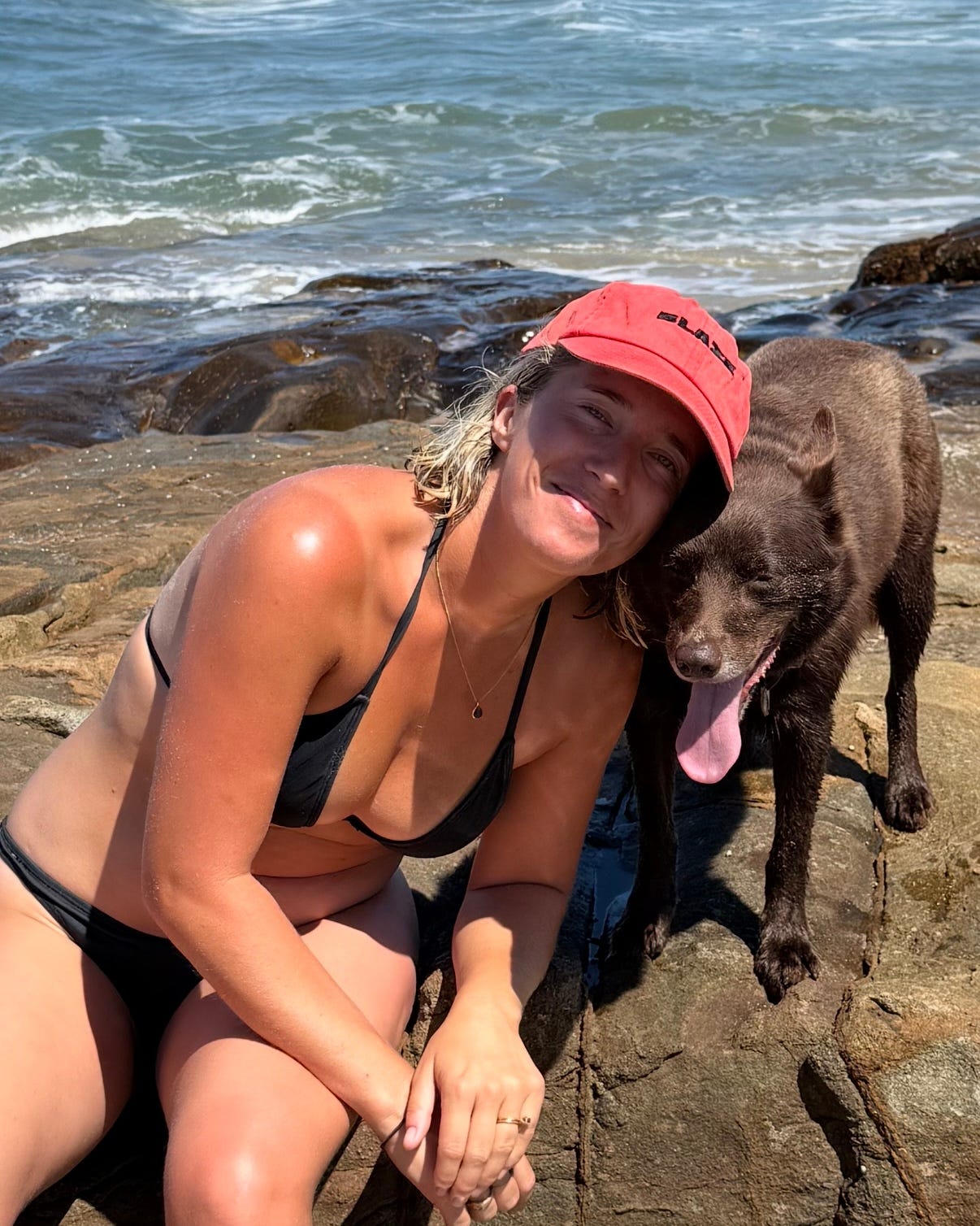
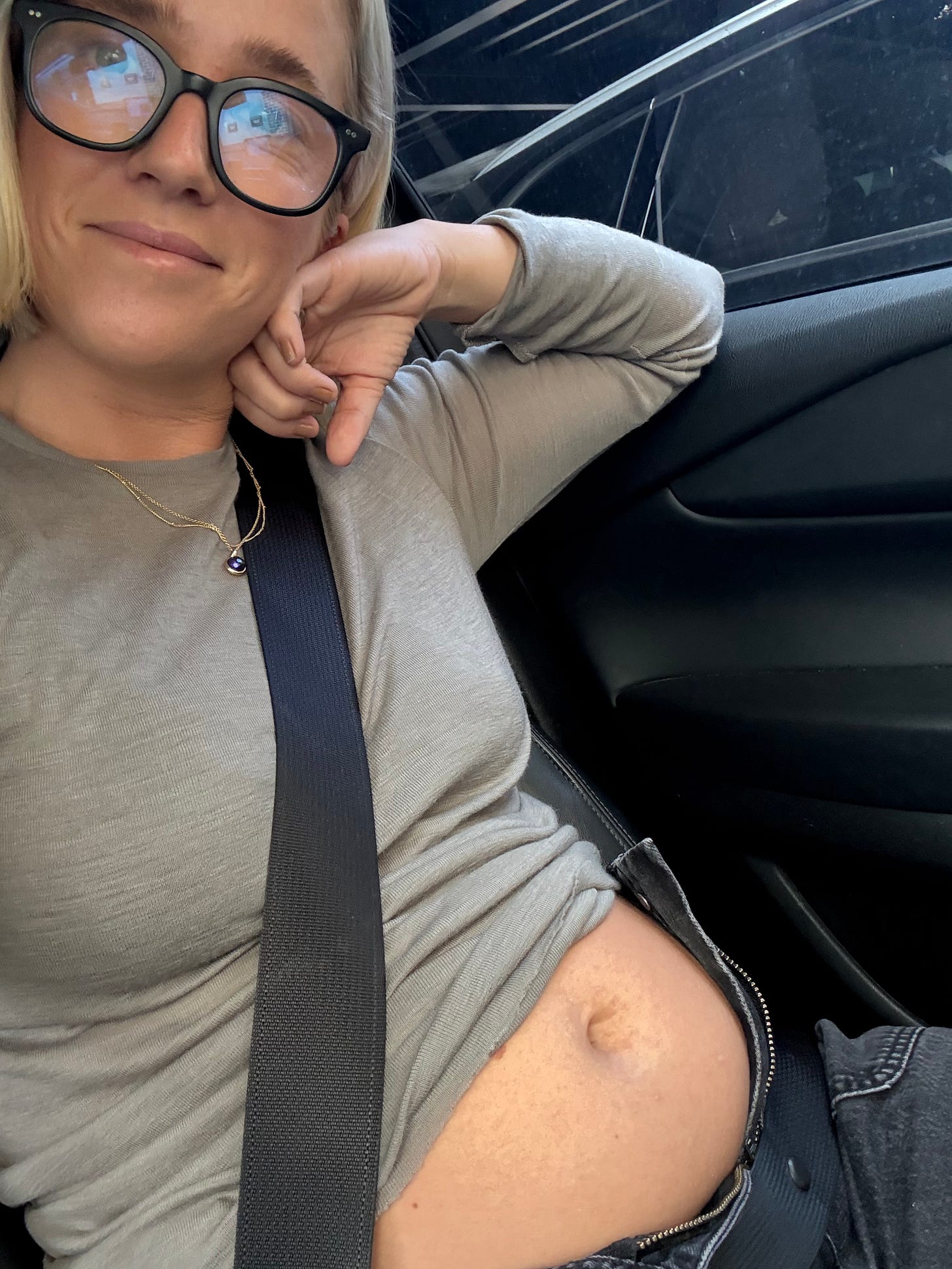
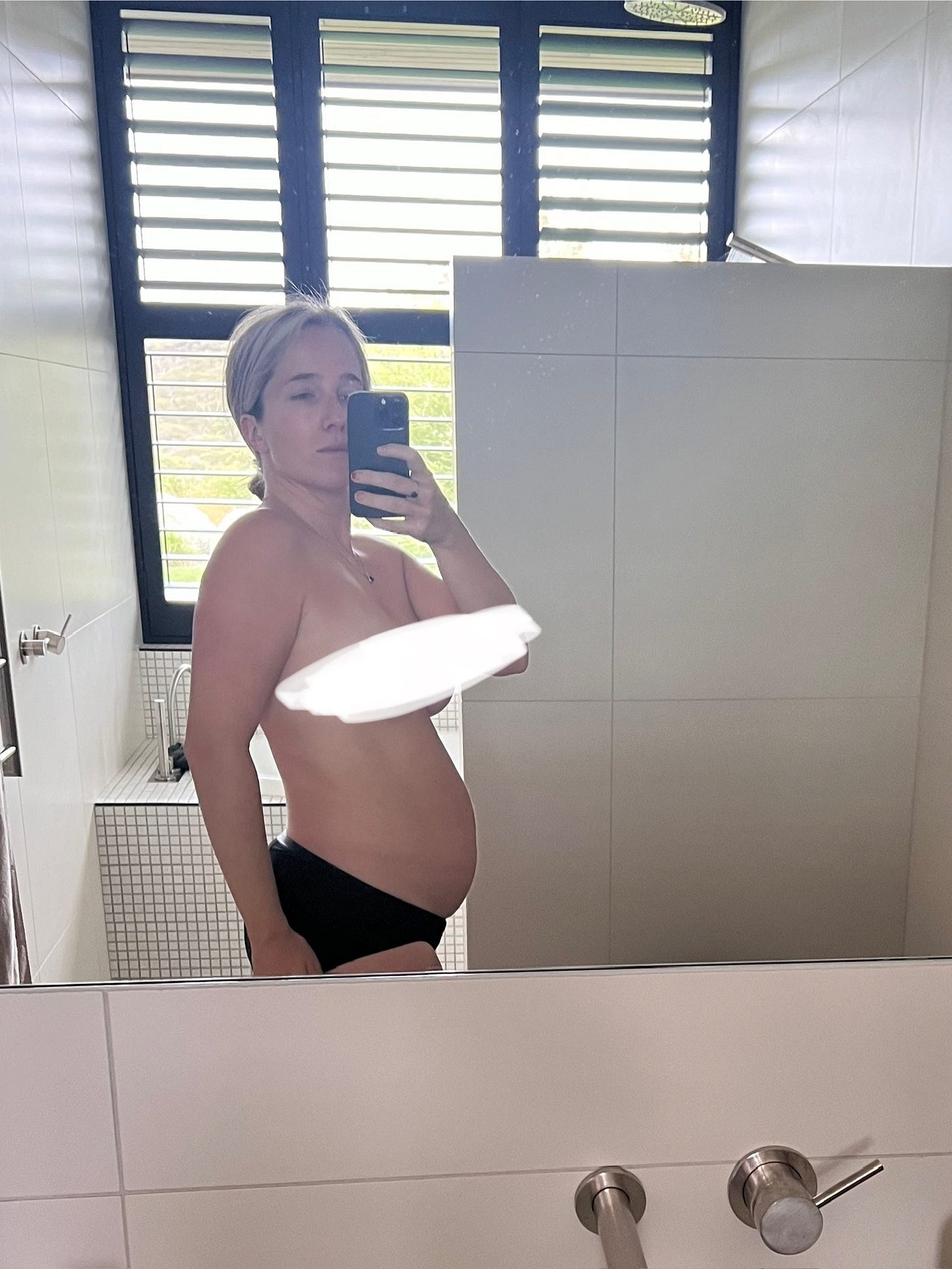
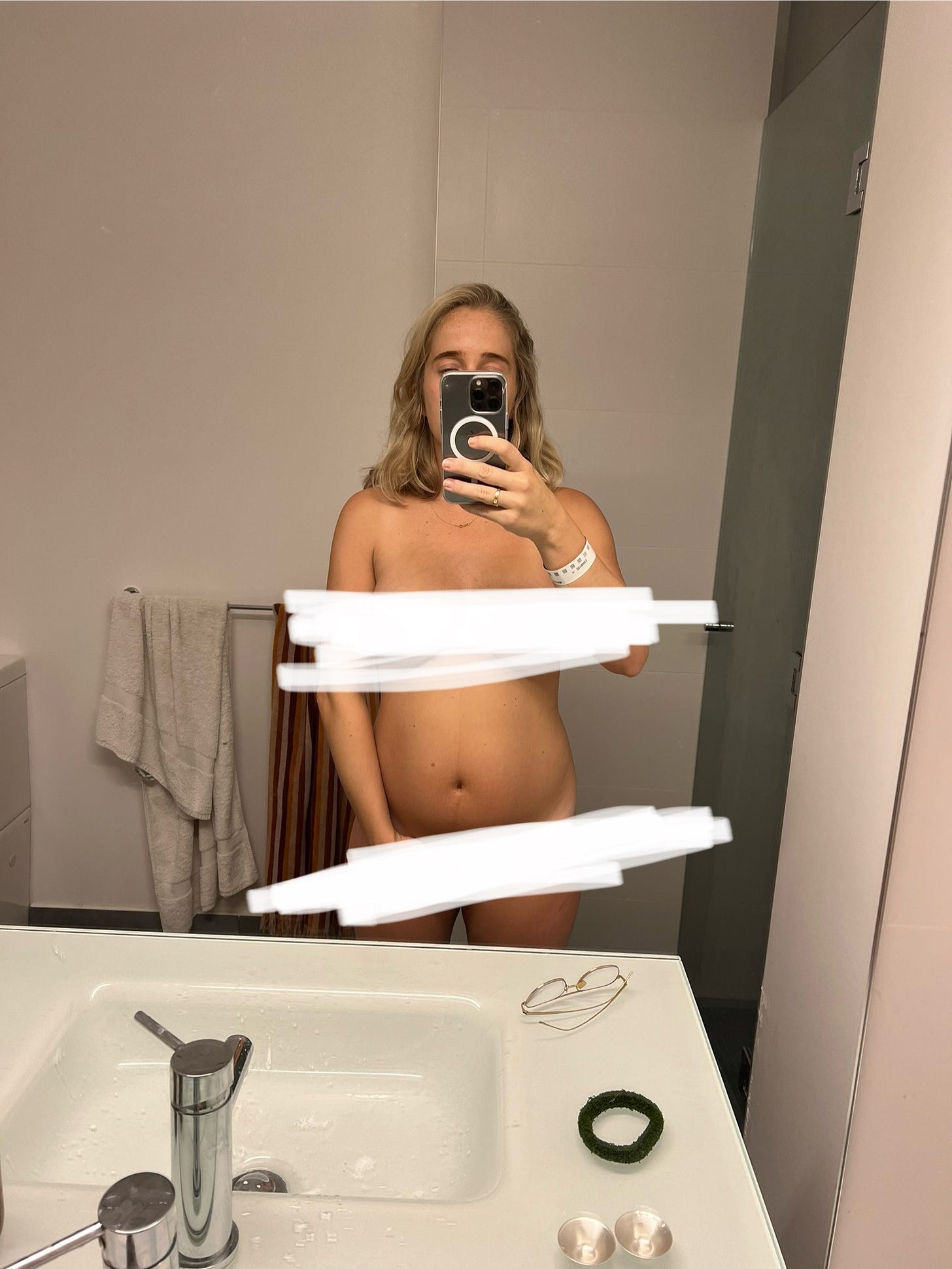
I think you've perfectly described why it's hard to accept because until we're in postpartum ourselves, we've never seen an honest portrayal of a postpartum body. One reason is because the images we see on instagram tagged #postpartumbody are more often than not, new mums in active wear. There's a study lead by researcher Megan Gow that looks at these images and how detrimental they are to a maternal mental health in postpartum. This feeds into the fact that by 4 months postpartum, close to 70% of mothers are dieting (pp is also a high-risk time for eating disorder relapse). What we're not talking about enough is how long birth recovery takes, especially in regard to how the body functions. Anyway, could go on, have spent the past few years researching postpartum, so full of anger and facts. ha! x
I know this article was about the postpartum belly in particular, but I have to tell you that when I looked at those pictures my first thought was: gosh, she’s so beautiful.
It’s funny, my mum and I were talking about this yesterday: one of her friends has gone through 3 big losses in the past 6 months and has gained a lot of weight. She confessed it to my mum and said “well now that I’ve told you I don’t feel so embarrassed to see you” and my mums reply was “I don’t think I would have noticed, I see your heart when I see you.”
(Sorry! This is such a long reply) I just wanted to say 1) thank you for sharing this vulnerable thing and 2) most of the people who know you - or who even don’t - probably don’t notice your body. They see your heart, your smile, your energy and the way you love your children.